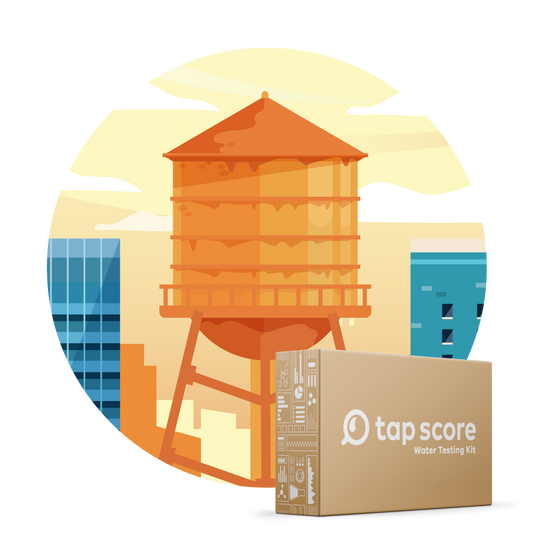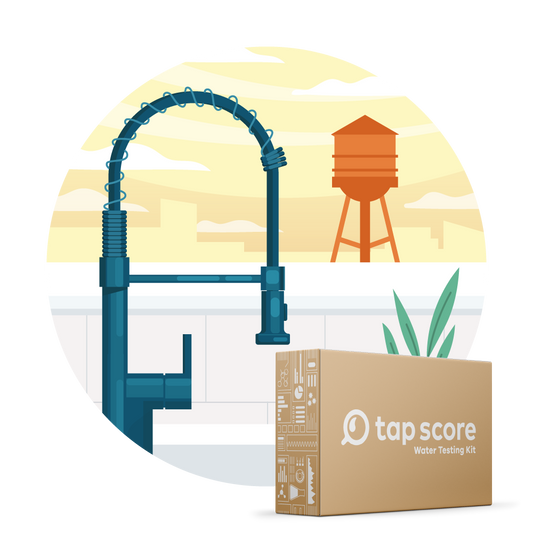
Glyphosate and Tap Water: Are You At Risk?
Our blog is written by real experts— not AI. Each guide is carefully reviewed and updated based on the latest research. Plus, with no affiliate links, you can count on unbiased insights you can trust.
Have you ever wondered how the food production industry has been able to keep up with feeding our world’s rapidly growing population? Or perhaps, what your food goes through before it lands on the shelf at the grocery store? The answer to both questions, in part, involves glyphosate. Glyphosate, more commonly known as “Roundup”, is an herbicide created by Monsanto.
The use of Roundup has been under extreme scrutiny recently. There are around 2400 lawsuits and counting against Bayer (the company that acquired Monsanto in June 2018), claiming that glyphosate causes cancer. [1]
We, at SimpleLab, have created a quick guide on understanding exposure to glyphosate through drinking water that asks (and answers) the following questions:
- What is glyphosate?
- How does glyphosate end up in drinking water?
- Is glyphosate harmful to humans?
- How to know if there is glyphosate in your water?
What Is Glyphosate?
The discovery of glyphosate in 1973 transformed Monsanto’s operations and the global food industry.[2] As the first non-selective herbicide invented, glyphosate can kill any weed in its path, unlike previous herbicides that could only kill specific weeds. Put into production and first commercialized in Malaysia and the UK in 1974, Roundup subsequently became the most widely used agricultural chemical in history.
A shocking 9.4 million tons of glyphosate have been sprayed onto fields worldwide since 1974.[3]
How Does Glyphosate Get Into Drinking Water?
Several studies suggest that glyphosate, despite its affinity for soil, can make its way into aquatic environments and drinking water wells. [4] Once glyphosate enters water, it becomes stable and does not degrade easily. As a result, glyphosate can enter surface and subsurface water through two main pathways:
- Roundup windblown into bodies of water adjacent to sprayed fields
- Irrigation runoff from sprayed fields into distant bodies of water
Humans are most likely to be exposed to glyphosate through direct inhalation and skin contact, crops treated with Roundup, or drinking water contaminated with it.[5]
Of the 2400 lawsuits underway, most people had direct contact with Roundup by using it to spray their homes, schools, and farms. However, one drinking water facility in Florida and two in Louisiana reported glyphosate levels (9.00 parts per billion (PPB), 8.35, and 5.05 PPB respectively) above the Environmental Working Group’s health recommendation of 5 PPB. 5 PPB is a much more stringent health goal than the Federal EPA’s legally enforced Maximum Contaminant Level (MCL) of 700 PPB (or 0.7 mg/L).[6],[7]
The EWG did not flag Florida and Louisiana for water quality violations. Rather, these results were highlighted because their facilities reported concentrations above the World Health Organization and EPA’s definition of “acceptable risk” for carcinogens–a one-in-a-million chance of developing cancer.[8]
These two facilities serve around 8600 people, all of whom could now potentially have a higher risk of developing cancer than the general population.
What Does Glyphosate Mean for Your Health?
Glyphosate is classified as a Group 2A chemical by the International Agency for Research on Cancer (IARC), meaning that it is “probably carcinogenic to humans”.[9] The IARC came to this conclusion after many studies conducted on rats in combination with human evidence from accidental exposure.[10] The little data that does exist on humans shows some association for non-Hodgkin lymphoma, but there is sufficient evidence of carcinogenicity in animals.
Of greatest concern, there is strong evidence that glyphosate is genotoxic, i.e. can cause damage directly to DNA, which can lead to cancer. There is also strong evidence that glyphosate induces oxidative stress–an imbalance in our body's capacity to regulate free radicals, which are associated with numerous damaging health outcomes and natural aging processes.
Despite the evidence from the IARC for the carcinogenicity of glyphosate, Monsanto still claims that Roundup is safe and will not cause cancer.[11] Monsanto’s studies, however, were conducted or commissioned by pesticide companies in support of Monsanto’s goals and are kept hidden from the public.[12]
How Can You Protect Yourself Against Glyphosate?
Perhaps the lawsuits against Monsanto will be successful and Roundup will eventually come off the market, but in the meantime, SimpleLab recommends that you protect your water to protect yourself.
The best ways to protect yourself and water against glyphosate are:
- Do not use glyphosate-based herbicides (especially if you are on well water)
- If you do use herbicides of any kind, do not overuse them in order to avoid run-off
- Try to limit consumption of crops likely sprayed with glyphosate (unfortunately, this means most non-organic foods)
While the risk of glyphosate in your tap water is likely low if your water is treated by a municipality, well water owners near lawns, gardens, and farms that use herbicides may want to test their water for glyphosate.
How To Test for Glyphosate in Water?
The only way to know if there is glyphosate in your water is to test it. Take a look here:
If we detect glyphosate or its degradation byproducts in your water, there is hope. Every Tap Score water test includes unbiased and personalized, unbiased treatment recommendations based on what is found in your water. Our team of treatment experts, chemists, and water quality engineers can walk you through how to treat your drinking water so that you know that what you are drinking is safe.
Sources and References
▾- Inside Monsanto's day in court: Scientists weigh in on glyphosate's cancer risks | The World from PRX
- Roundup® | Herbicides | Bayer Crop Science Canada
- Glyphosate Now the Most-Used Agricultural Chemical Ever
- Public Health Goal for Glyphosate in Drinking Water, June 2007
- Glyphosate and AMPA in Drinking-water
- Glyphosate - EWG Tap Water Database
- National Primary Drinking Water Regulations | US EPA
- 10 Acceptable risk
- List of Classifications – IARC Monographs on the Identification of Carcinogenic Hazards to Humans
- IARC Publications Website - Some Organophosphate Insecticides and Herbicides
- US EPA reaffirms that glyphosate does not cause cancer | Reuters
- Carcinogenicity | The Detox Project






